“Snowpiercer” and “Parasite,” both by Oscar-winning director Bong Joon-ho, highlight clashes between the elite and the disenfranchised, a motif that has resonated deeply with audiences worldwide. These idiosyncratic films display how Bong uses space to address his social concerns.
Korea has no shortage of original and creative commercial movies. But its film industry also possesses an abundance of flicks exploiting a single obvious motif. Their heyday in the early 2000s especially latched onto gangster comedies. Popular storylines had a gang boss going back in time to aof incidents in high school, or a female prosecutor marrying into an organized crime family. The formula ensured box office success, and copycats proliferated for years.
Filmmakers finally widened their scope in the 2010s, but their subsequent hunt for a distinctive concept persisted. As long as the box office largely defines the commercial achievement of a film, a trailblazing storyline is gold. On the other hand, producers and directors who are more risk averse may fall back on well-worn plots that have already enthused moviegoers. The pitfall there is overuse; these movies deliver little more than a predictable sequence of scenes and a cliché ending. Such flicks may be good for filling time, but not for broadening one’s horizons.
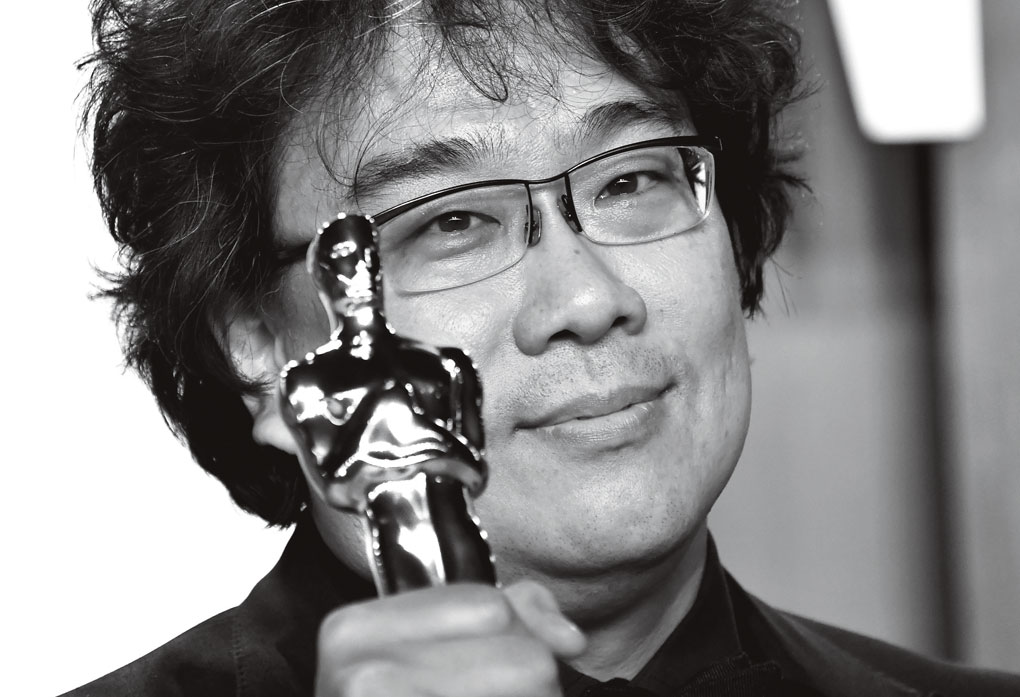
Director Bong Joon-ho holds his Oscar trophy at the 92nd Academy Awards on February 9, 2020. For his scathing black comedy, “Parasite,” Bong picked up four Oscars, including Best Picture (the first ever for a non-English film), Best Director, Foreign Language Film and Original Screenplay, rewriting the history of the Academy Awards as well as that of Korean cinema. This came on the heels of his Palme d’Or at the 72nd Cannes Film Festival last year. © gettyimages
Upending Assumptions
Bong Joon-ho strikes a different path, carving out a novel niche in genre film. He dangles an interesting concept that piques the audience’s curiosity, but then goes a step beyond. This approach has earned him the highest recognition in the industry.
When Bong’s “Parasite” (2019) took home multiple Academy Awards in February on the heels of its Palme d’Or at the Cannes Film Festival last year, interest was sparked in the movie’s application of vertical space. This interest also expanded to Bong’s previous works, and notably to the horizontal space in which the action unfolded in “Snowpiercer” (2013), a futuristic sci-fi thriller and Bong’s first English-language film. Both movies depict the impoverished underclass plotting to jump over the gap between themselves and the elite.
In “Snowpiercer,” the underprivileged mass crammed into the rear section of a train advance “horizontally” toward the front section where the elite reside. In “Parasite,” a poor family of grifters living in a semi-basement apartment moves “vertically” by infiltrating the wealthy family of Park Dong-ik, who lives in a posh, hilly neighborhood. The concepts of these movies make their spatial contexts ripe for explicit, black-and-white interpretations. Such viewpoints would not be entirely wrong. However, they would most likely preclude the infinite possibilities of the imagination that can flourish when moviegoers’ memories and fantasies meld with on-screen images. Rather than presenting a single clear-cut answer, Bong’s movies are characteristically saturated with questions and suggestions. So in order to fully enjoy this maverick director’s films, viewers need to refrain from predetermining their direction.
The world of “Snowpiercer” is the planet Earth frozen in a new ice age. The only human survivors live aboard a train that endlessly circles the snow-covered globe. The passengers are segregated by social status; as the movie progresses, those in the rear, perpetually suffering from inhumane treatment, revolt and fight their way forward to the first-class front section, one car at a time. If this was all there was to the movie, it would be no different from any other escape film. Unexpectedly, Bong upends the motif and veers to the side – literally and figuratively. As security specialist Namgoong Min-soo (Song Kang-ho, who also stars in “Parasite”) opens a connecting door for the rebels to advance, he turns his gaze to a side door. To decipher its meaning, we need to explore Bong’s “concept within a concept.”
The Changed World
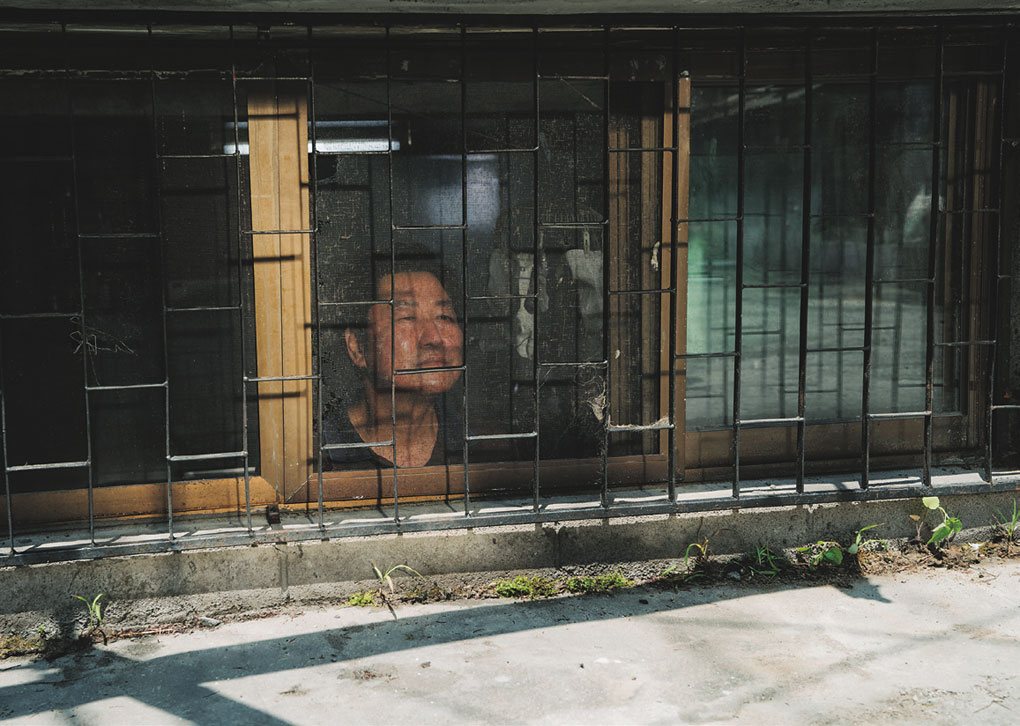
At the outset of “Parasite,” Kim Ki-taek peers out of a semi-basement apartment that his family occupies. Detached houses of the 1980s were required to have semi-basements in case war erupted. The government eventually allowed these spaces to be rented, creating an affordable option for low-income households. © CJ ENM

The home of the Park family in “Parasite” underscores the wide economic gulf in Korea.A 2019 survey says that the average monthly household income of the bottom and top quintiles is around 1.3 million won and 9.5 million won, respectively. © CJ ENM
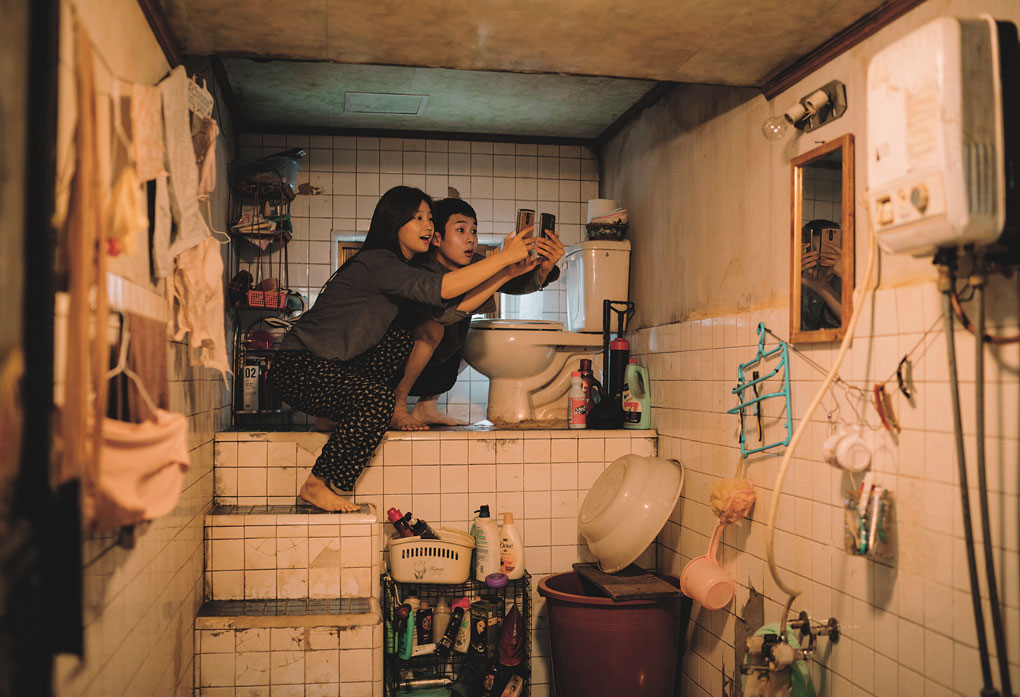
Kim Ki-woo and sister Ki-jung try to find a free WiFi signal from the bathroom in their semi-basement apartment. The toilet in such homes is usually built on a higher level. If it is lower than the underground septic tank, sewage can flow back up. © CJ ENM
The steam locomotive is a symbol of the modern era. After the invention of the steam engine ushered in mass production, urban populations exploded. Time management subsequently evolved in order to oversee factory employees who were accustomed to a sunrise-to-sundown workday.
Factories had to schedule commute and shift hours, and trains needed to arrive as scheduled. As a single machine could now do the work of a hundred humans, machines came to be valued more while humans were relegated to maintaining them. In the 20th century, machines were worshipped and the elite minority who owned them ruled the world – much like the ruling class in “Snowpiercer” and the “sacred engine” of its train, both of which can be maintained only when each component fulfills its role.
As portrayed in Charlie Chaplin’s silent comedy “Modern Times” (1936), workers in the mechanized world were reduced to mere interchangeable cogs in a vast machine. “Snowpiercer” offers a harrowing depiction of class segregation in one particular scene where small children are discovered inside the train’s engine, performing the roles of broken parts. Minister Mason (Tilda Swinton) orders the rebels to “stay still” while the train’s owner and overlord Wilford (Ed Harris) declares, “Everybody has their own place.”
The train’s elite employ various measures to control both the human and animal populations on a regular basis. This is the inhumane logic of the modern, industrialized era, dominated by machines and productive capital. But in reality, the tide of industrialization began to turn later in the 20th century. The Cold War system collapsed and the Age of Ideology waned. The technological revolution has since ushered in a new era where intangible digital data, which moves freely without physical limitations, attracts money and power. Financial capital and digital power have become the ruling forces as the Machine Age has yielded to the Information Age, represented by the Internet. In this new era, the subjugated fight against an invisible foe from the virtual world. Similarly, as the impoverished underclass in “Snowpiercer” continues a 20th-century style battle, the world outside the train undergoes immense changes.
This is illustrated exquisitely in a particularly memorable scene. Unlike the rebel leader Curtis Everett (Chris Evans), whose gaze is locked on the door leading to the carriage ahead, Namgoong Min-soo frequently glances outside. A snowflake catches his eye. It swirls here and there, its direction determined by the complexities of the atmosphere and even the breath of living organisms. This is a different kind of movement compared to the rebels’ dogged advance forward in the early part of the film. It can be likened to a digital signal that has escaped the modern era when “everybody has their own place.” This is Bong’s way of questioning the assumed concept of the movie – the undeterred quest forward – and suggesting that we stop staring straight ahead and notice changes occurring around us.
The vertical space in “Parasite” is another concept. The metaphor of stairs in the movie serves as Bong’s bait. The film’s deceptively simple tagline, “What happens when a poor family works in a rich family’s house?” obviously predicts an impending class war. But that idea is overturned in the second half of the film when skirmishes between the poor and the poorer take center stage. The wealthy Park family is completely oblivious to this struggle, and neither the media nor the police has a clear grasp of the events that transpired. While members of the upper class were busy playing their role “faithfully but without an ounce of self-reflection,” did the world revert to the pre-modern era, when, in the words of philosopher Thomas Hobbes, there was “war of all against all”? The employment issues that underlie the movie constantly remind audiences of the unintentional real-life conflicts between full-time and contract workers, those who were laid off and those spared, and small business owners and part-timers.
Rather than presenting a single clear-cut answer, Bong’s movies are characteristically saturated with questions and suggestions. So in order to fully enjoy this maverick director’s films, viewers need to refrain from predetermining their direction.
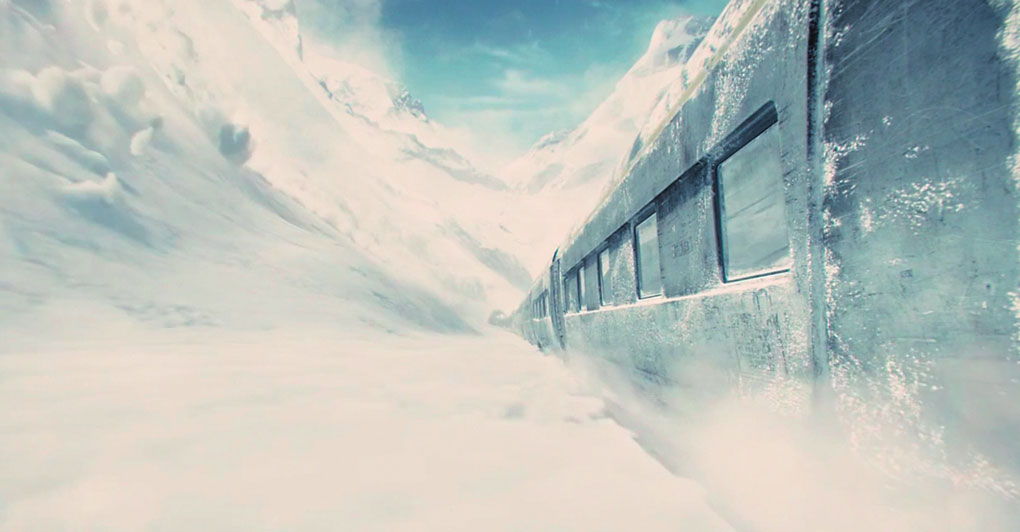
Bong Joon-ho’s 2013 film “Snowpiercer” is based on the French graphic novel of the same title by Jacques Lob and Jean-Marc Rochette. In the post-apocalyptic sci-fi thriller, the only humans surviving in a new ice age are on a train that endlessly circles the frozen globe. © CJ ENM
Invisible Power
The rear passengers in “Snowpiercer” relentlessly strive to forge their way forward, but in the end, shift their gaze to a revelation on the frozen terrain. Likewise, the poor Kim family in “Parasite,” with their sights set on moving upward, instead descends to rock bottom. This is encapsulated in a bloody scuffle between the Kims and an even more desperate couple, the Park family’s housekeeper and her husband, who secretly lives in the rich family’s house, hiding from loan sharks. After fleeing the house and racing down steep stairs in a torrential downpour, the poor family’s son, Ki-woo, suddenly halts and ponders, “How is it that we seem to get embroiled in battles only with those who are worse off than us?”
The stairs in the movie inquire whether there is an invisible power in our society that pits the socially disadvantaged against one another. This power could be something that is omnipresent in cyberspace but indiscernible to the naked eye, very much like the world in the virtual reality devices developed by the global IT enterprise run by the rich family’s patriarch, Park Dong-ik. This is why “Parasite” and its contemplation of 21st-century society appear a shade more pessimistic than “Snowpiercer” and its philosophical reflection on the 20th century.
The crisis of global capitalism, tectonic shifts in the job landscape and consequences of anti-ecological acts – these have been among Bong’s ongoing interests. Even in today’s highly interconnected world, decisions are still being made at the local and national level, which is not conducive to effectively addressing the common global challenges faced by humanity. Perhaps this is why Bong’s movies continue to pose on-point questions that prod us to encounter reality while conveying his profound concern for the human race.
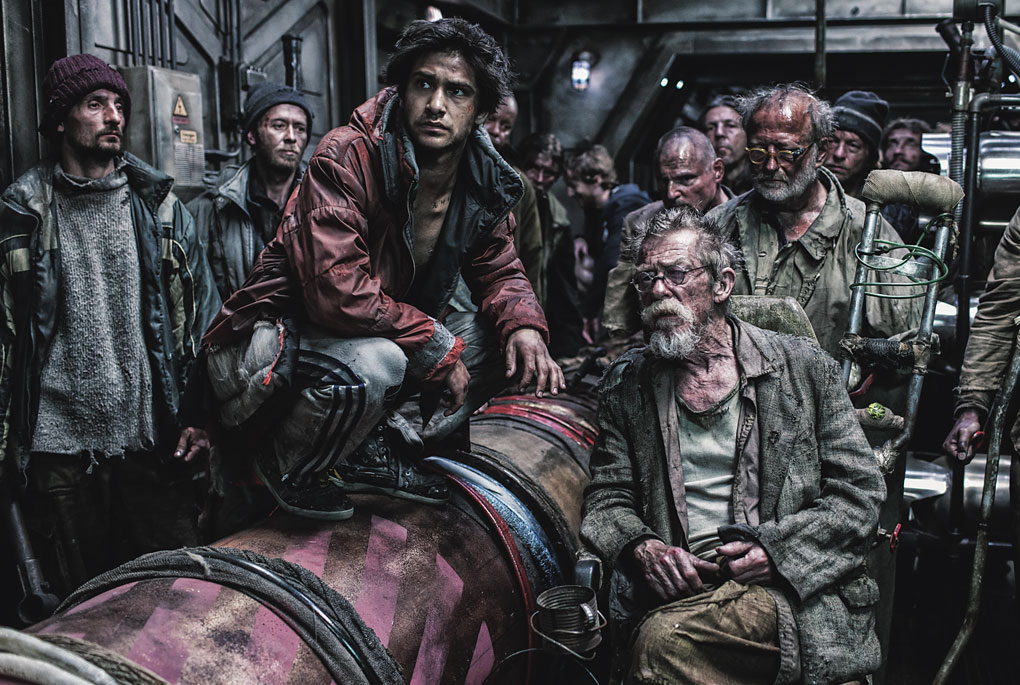
The destitute aboard “Snowpiercer” surround spiritual leader Gilliam (John Hurt), who wants rebel leader Curtis (Chris Evans) to take his place. © CJ ENM

The lavish lifestyles of the elite in the front of the train are built on the sacrifices of the poor passengers crammed in the rear. © CJ ENM